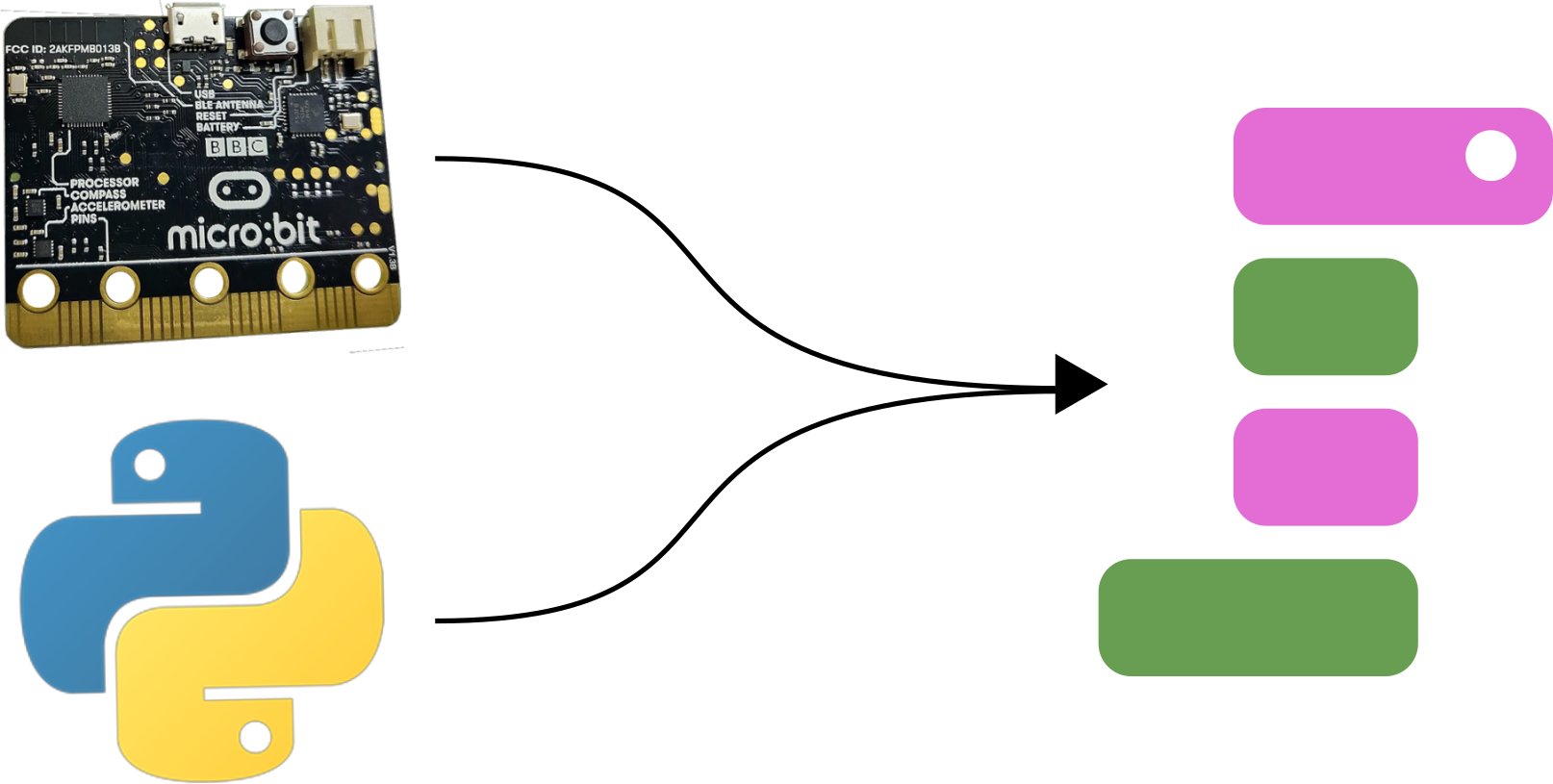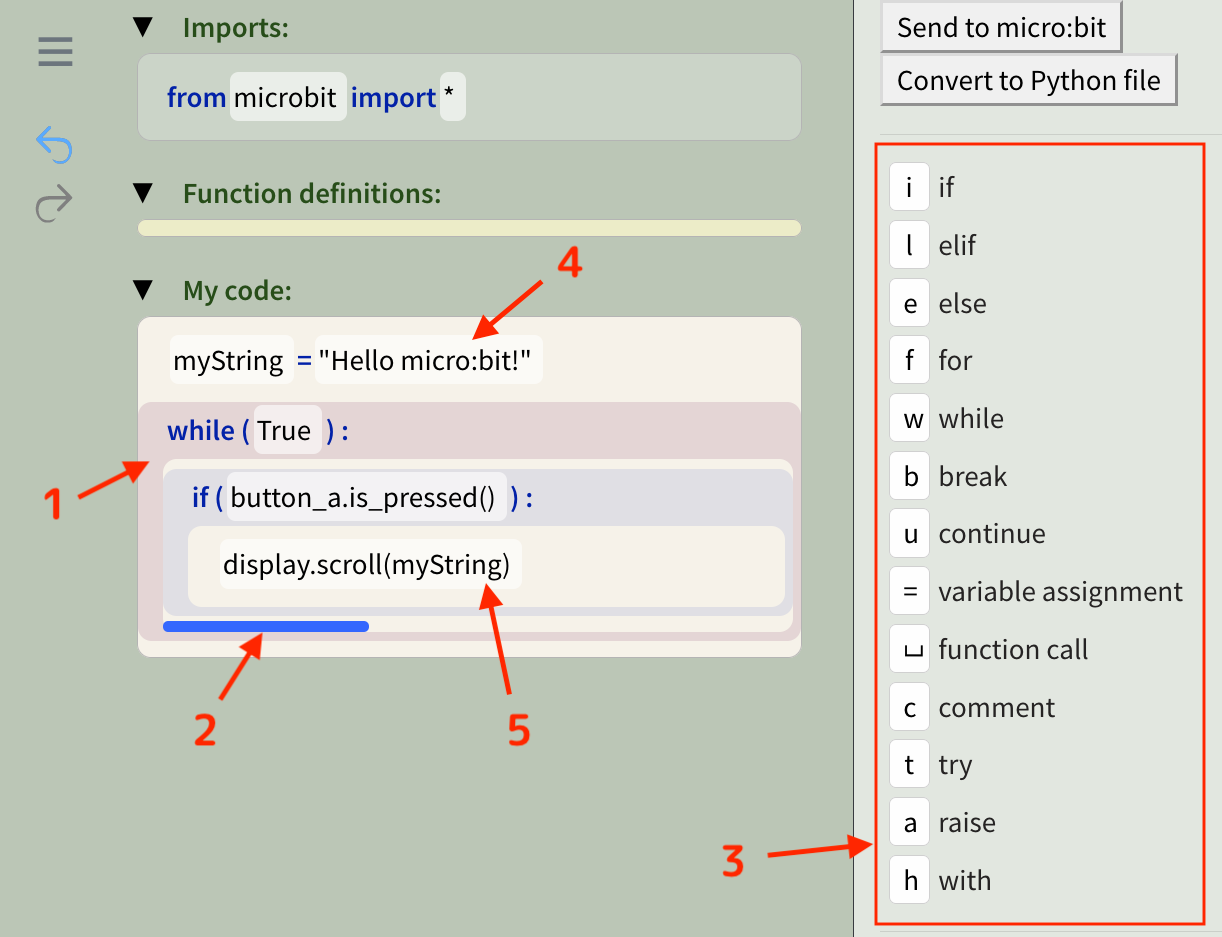
Strype is a novel frame-based
editor for programming the micro:bit through Python.
It was designed in order to have the benefits of both block-based 4
(like drag&drop and recognition over recall)
and text-based editing (such as keyboard only interaction).
In this project I was assigned as the coordinator and thus guided the
design, development and evaluation of this new tool.
Strype was designed using modern
front-end web technologies (Vue.js and Typescript)
and runs completely on the user's browser, without the need of installation.
The final outcome is Strype, is a
conjunction of Python language with a popular
educational hardware device in order to program it. More on this, and the
on the tool in general, will be posted in my here as soon as the first
prototype is functional.

Strype has been evaluated for usability with 7 teachers from different countries
around the world.
Currently we are running a study to assess its effectiveness in helping students
transition form
block-based programming.
More news and details about Strype will follow soon, as the project is still
running.